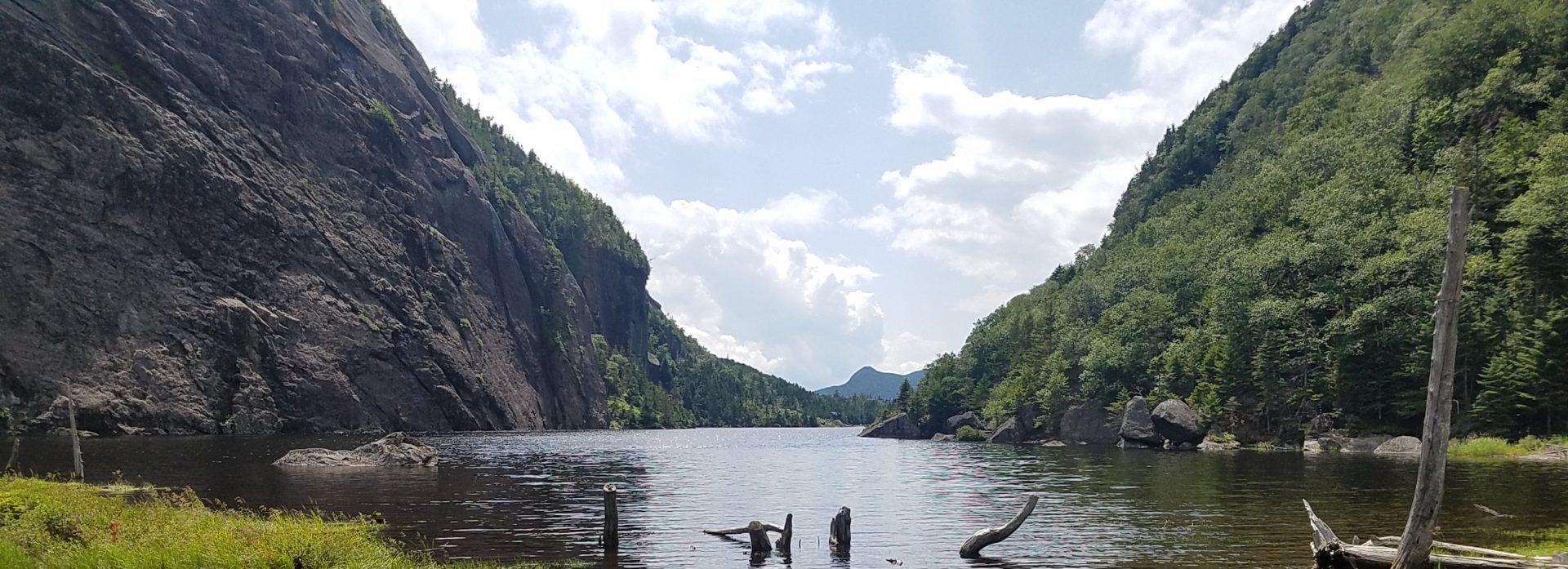Home / Activities / Vertical Caving
VERTICAL CAVING
See the list of current leaders, here.
Everything for horizontal caving, plus….
1. TEACHING AND ASSISTING BEGINNERS
Demonstrates assisting and supervising beginners in the vertical cave environment.
Knows how, why, and when to bottom belay.
Delegates assisting/supervising and/or belaying as appropriate.
Demonstrates setup and SUCCESSFUL instruction of beginners in “vert school”, covering:
- system assembly
- system adjustment
- ascending (with an emphasis on climbing efficiency)
- self-management of bottom tension
- downclimbing
- descending (including techniques for managing friction)
- descender lock-off
- both changeovers
2. PERSONAL COMPETENCE IN SRT PROGRESSION
Demonstrates personal mastery of above skills:
- with a frog system
- with whatever other system personally preferred, if not frog
Can rappel, lock off, and changeover (with frog) to and from:
- full (J-frame) racks
- micro racks
- Munter hitches (Mule knot or half-hitch + overhand acceptable)
Can either climb
(1) 100’ of rope in under 10 minutes using a frog system, or
(2) speedily and well with another versatile climbing system.
Can progress on traverse lines and properly clip into all types of anchors.
Can French rappel in appropriate situations.
Can work around the loss of an ascender.
Can assemble and climb with 2- and 3-knot Texas systems.
Has basic familiarity with systems besides frog:
- ropewalker
- Texas
- Mitchell
3. COMMUNICATION
Communicates effectively with fellow trip participants and members of other groups.
Appropriately uses, heeds, and takes seriously rope commands:
- On Rope
- Off Rope
- OK
- STOP!
- Stand By
- ROCK!
- Falling!
- Tension
- Slack
- On Belay? (to be belayed)
- Belay On (when belaying)
- Off Belay (when being belayed)
- Belay Off (when done belaying)
- Rappelling (optional)
- Climbing (optional)
Is unconstrained by rope commands—speaks in full setences when appropriate.
4. RIGGING
Rigs for safe attachment, detachment, and progression.
Rigging/de-rigging are themselves performed safely.
Knows how to inspect anchors (including bolts).
Rigs redundantly where appropriate.
Understands fall factor and wide-angle force multiplication.
Minimizes fall factor and fall distance in the event of partial anchor failure.
Knows how and when to use each of these knots:
- water knot (in webbing)
- figure-eight on a bight
- figure-eight follow-through
- double figure-eight
- triple figure-eight bend (for joining ropes in mid-pitch with a clip-in loop)
- alpine butterfly
- bowline (with overhand stopper, double overhand stopper, or Yosemite finish)
- Munter hitch
- Prusik
- barrel knot (for cowstails)
Knows how and when to rig with these techniques:
- Tensionless hitch (with and without hardware)
- Wrap-3 pull-2
- Wrap-2 pull-1
Knots are properly tied:
- have adequate (generally 4”) tail (measured past the backup in a bowline)
- are well-set
- are dressed recognizably (Prusiks dressed perfectly)
Can rig directly with the rope (and no hardware) to trees and natural anchors.
Can rig rope with carabiners/maillons to:
- 1 bolt
- 2 bolts
- 1 tree
- 1 tree + 1 bolt
- natural anchors
Can safely rig and derig traverse lines.
Can store and deploy rope efficiently:
- with a rope bag
- with a caver’s coil
- remembers to tie end-line knot (in case rope is too short)
Can efficiently daisy-chain and unchain webbing.
Properly pads edges where appropriate.
Can tie and pass, and teach/assist others to pass knots in mid-pitch.
- changing over to downclimbing to pass knots on descent is acceptable
Can tie off a damaged section of rope with an alpine butterfly.
5. EQUIPMENT MAINTENANCE
Can and DOES properly and thorougly wash vertical gear.
- Instructs beginners in the same.
Can wash, inspect, and cut rope and webbing.
Knows when to retire rope, webbing, harnesses, cowstails, and other textiles.
Can properly store ropes and other textiles.
Understands the dangers from chemicals to ropes and other textiles.
Understands that there are both safety and conservation issues regarding WNS decontamination of load-bearing items, and that before going from an affected area to an unaffected one, properly researched decontamination must be performed.
6. OTHER SKILLS
Has a basic understanding of harness pathology.
- Knows the 10 minute rule for rescue of suspended persons.
Can employ Munter hitch belay (direct from anchor) including:
- knowing when to belay
- rigging belay anchor
- tying Munter hitch (with appropriate carabiner) and belaying from above
- locking (tying) off Munter hitch, and unlocking, while under load
- understanding and correctly employing belay commands
Can operate a pulley with a progress capture device.
7. RECOMMENDED ADDITIONAL KNOWLEDGE
(These skills are not required to become a vertical caving leader initially, but are encouraged. We need to have leaders who possess these skills.)
Knows and keeps apprised of the current best practices for White Nose Syndrome decontamination of load-bearing items.
Can rig, derig, pass, and instruct/assist others in passing redirects and rebelays.
Can properly join ropes at a rebelay.
Can cut and tie Prusik loops (with double fisherman).
Can rig rope with webbing/cord and carabiners/maillons to:
- 2 trees or natural anchors
Can rig with triple bowline on a bight:
- in mid-rope, around an object
- to 3 bolts or other anchors (load-sharing)
Knows when and how to use basket rigging:
- can modify to make non-slipping
- can modify to eliminate tridirectional loading
Is proficient in hands-free single-ascender self-belay (self-lining)
- technique only approved on ropes 10mm or thicker
- rope must feed through, slack must be avoided
- is mindful of the possibility of inadvertant opening of ascender
- with beginners, uses only for ladder climbs
Is proficient in the use of cable ladders:
- knows when to use them, and why they are rarely used
- uses and teaches proper climbing technique
- can rig and re-coil cable ladders
- can join two cable ladders
- uses belays (except for very short drops with experienced ladder climbers)
Bolting skills
